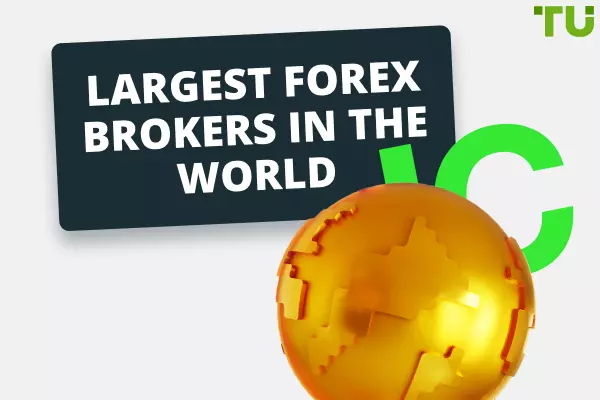Understanding Hawkish vs. Dovish Monetary Policy| Key Definitions For Beginners
The Hawkish Monetary Policy prioritizes controlling inflation. It typically involves rising interest rates and reducing the monetary supply or limiting its growth. In contracts, the Dovish Monetary Policy prioritizes promoting economic growth. It aims to reduce unemployment and involves the lowering of interest rates in order to encourage borrowing and spending.
Monetary policies play a pivotal role in shaping the economic landscape of a nation. Monetary policies are the actions and measures that are taken by a specific country's central bank or monetary authority. Their objective is to control the money supply, interest rates, and other monetary variables within the economy.At its core are two contrasting approaches: hawkish and dovish. These terminologies often pop up in financial news and analyses, but what do they truly mean? In this article, we will define hawkish and dovish monetary policies, discuss the tools that central banks use to implement these policies and examine the impact of these policies on the economy.
What is hawkish and dovish monetary policy?
Whether being hawkish or dovish in a specific situation is good or bad, depends on the strength of the economy and other microeconomic factors. This is because they both take different approaches, and here, we will go over how they originated and how they operate.
The terms hawkish and dovish are used to describe different approaches to monetary policy. This refers to the stance taken by central banks when managing interest rates. They also control the currency supply to achieve specific economic goals.
The terms hawkish and dovish originated from the bird-watching fields. This is because hawks are typically aggressive and vigilant, and doves symbolize peace. These characteristics are metaphorically applied to describe the different approaches of a monetary policy. For example, when someone refers to it as hawkish, they mean that they are keeping an eye on inflation and need to take steps in order to control it.
When they refer to dovish, they are referencing an economic policy advisor who advocates for monetary policies that involve low interest rates. Doves take the stance that inflation is not bad and that it is bound to not have too high an effect on the economy. Low-interest rates, in this case, are a necessity to stimulate economic growth and future job creation.
Related terms for beginners
Numerous terms are utilized across these monetary policies, and they include quantitative easing, fiscal policy, monetary tightening, and yield curve. Here, we will dive deeper into the meaning of each one.
-
Quantitative easing occurs during times of an economic crisis or whenever the interest rates are already low. In this case, the central banks would resort to quantitative easing. This involves the process of purchasing large quantities of government bonds or other financial assets in order to increase the money supply and stimulate economic activities.
-
Fiscal policy refers to the usage of government spending and taxation with the objective of influencing the overall economy. Governments will typically use this policy to promote strong, sustainable growth whilst reducing the poverty rate.
-
Monetary tightening at the point in time whenever the Fed increases interest rates; the process is known as monetary tightening. In this case, a higher interest rate is intended to help control high inflation, as access to credit becomes more expensive, which leads to a reduction in consumption and investment.
-
Yield curve - this is a graphical representation of how much it costs to borrow money throughout different periods of time. It plots yields (interest rates) of bonds that have equal credit quality but different maturity dates. The shape and slope of the yield curve provides insights into market expectations about the future path of interest rates.
How does hawkish and dovish monetary policy work?
The Hawkish Monetary Policy is used whenever a central bank wants to decrease financial liquidity. This is achieved in numerous ways. For example, at the FOMC meeting, the Fed can increase the Fed Funds Rate. This is the target rate of interest that banks can charge each other for overnight loans. The banks will charge interest to customers, and this is known as the prime rate.
Any increase in the rate leads to a corresponding rise in short and long-term interest rates. Moreover, the Fed can also reduce the number of Treasuries and mortgage-backed securities it owns. This is done through quantity-tightening measures. By understanding both, a fundamental analysis can be conducted.
Then there's the Dovish Monetary Policy. This is the opposite of the hawkish and favors expansionary monetary policy in order to get the highest levels of employment. The Fed does this by simply lowering the Fed Funds Rate.
This makes it easier for anyone to obtain a mortgage, whilst customers can also purchase things on credit. Businesses can also get loans to hire more workers and increase their production as a result.
Example of hawkish and dovish monetary policy
Dovish Policy Example. In the wake of the 2008 financial crisis, the Federal Reserve pushed interest rates near zero and pursued quantitative easing to fight recession and deflation. Trillions of dollars were created from 2008-2014 to purchase bonds and mortgage-backed securities. This extremely dovish policy sought to boost lending, spending, investment and economic growth at the risk of higher inflation.
An example of hawkish central banks would be the Bank of England and the Federal Reserve. These are responsible for raising interest rates during the past two years in order to control the increase in inflation.Their hawkish monetary policies are aimed at cooling price growth despite economic risks.
Best Forex brokers

FAQs
Which monetary policy is better for the economy?
This is highly dependent on the current state of the economy. In a scenario where the economy is strong, a hawkish market could be a better option. In comparison, if the economy is weak, the dovish approach could be a better option. As a result, each of them has trade-offs, and neither is inherently better.
How do interest rate changes impact consumers?
The interest rates can affect the cost of borrowing money throughout the span of time. If the interest rates are lowered, the borrowing process is cheaper and as a result consumers spend more.
On the other hand, if ratesare increased, borrowing can be more costly and can result in decreased spending in favor of actually saving.
What causes a central bank to shift policy?
The key factor behind the incentives for banks to drive a hawkish or dovish shift is inflation. Other aspects that can cause them to shift their policy include gross domestic product (GDP), alongside industry and sector-specific growth rates.
How quickly does monetary policy affect the economy?
The immediate effects of a policy change can be observed easily. However, to truly see the full impact on inflation and growth, at least six to twelve months need to pass. As a result, there is a time-difference between the changes in the monetary policy and the overall effect on economic activity and inflation. This is because households and businesses will take a bit of time to adjust their overall processes.
Team that worked on the article
Milko Trajcevski is a truly determined content writer with a passion for the crypto industry. He has a successful track record of researching and effectively writing articles about cryptocurrency, non-fungible tokens, and blockchain covering the fields of crypto-asset regulations, wallets and exchanges, liquidity, altcoins, DApps, forks, mining, laddering, security and enterprise blockchain technology.
Milko focuses on contributing fresh and interesting articles to the Traders Union website, with expertise within the crypto-writing space, and a dedication to service.
Dr. BJ Johnson is a PhD in English Language and an editor with over 15 years of experience. He earned his degree in English Language in the U.S and the UK. In 2020, Dr. Johnson joined the Traders Union team. Since then, he has created over 100 exclusive articles and edited over 300 articles of other authors.
The topics he covers include trading signals, cryptocurrencies, Forex brokers, stock brokers, expert advisors, binary options. He has also worked on the ratings of brokers and many other materials.
Dr. BJ Johnson’s motto: It always seems impossible until it’s done. You can do it.
Mirjan Hipolito is a journalist and news editor at Traders Union. She is an expert crypto writer with five years of experience in the financial markets. Her specialties are daily market news, price predictions, and Initial Coin Offerings (ICO). Mirjan is a cryptocurrency and stock trader. This deep understanding of the finance sector allows her to create informative and engaging content that helps readers easily navigate the complexities of the crypto world.










